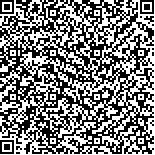| 丁贤彬,吕晓燕,汤 成.2006—2020年重庆市肝癌发病率的长期趋势分析[J].中国肿瘤,2022,31(4):260-268. |
| 2006—2020年重庆市肝癌发病率的长期趋势分析 |
| Long-term Trend of Liver Cancer Incidence from 2006 to 2020 in Chongqing Municipality |
| 投稿时间:2022-02-05 |
| DOI:10.11735/j.issn.1004-0242.2022.04.A003 |
|
 |
| 中文关键词: 肝癌 发病率 标化发病率 长期趋势 重庆 |
| 英文关键词:liver cancer incidence standardized incidence long-term trend Chongqing |
| 基金项目:西南地区慢病防控科技综合示范研究项目(2018YFC1311404) |
|
| 摘要点击次数: 1376 |
| 全文下载次数: 370 |
| 中文摘要: |
| 摘 要:[目的] 分析重庆市肝癌发病率的长期趋势,为完善肝癌防治措施提供科学依据。[方法] 利用2006—2020年重庆市肿瘤登记点肝癌新发个案数据,分析肝癌发病率、中国人口标化发病率(中标率)、世界人口标化发病率(世标率)、年龄别发病率,率的趋势变化分析采用年度变化百分比(APC)。[结果] 重庆市肝癌粗发病率由2006年的18.39/10万上升至2020年的28.72/10万,APC为3.56%(P<0.05)。2006年重庆市肝癌中标率与世标率分别为16.35/10万与17.80/10万,2020年分别为17.56/10万与18.86/10万,变化趋势差异均无统计学意义(P>0.05)。男性肝癌粗发病率高于女性。男性肝癌粗发病率与中标率分别由2006年的25.54/10万、24.11/10万上升至2020年的43.66/10万、27.56/10万,APC分别为4.19%与2.12%(P<0.05)。女性肝癌粗发病率由2006年的10.29/10万上升至2020年的13.62/10万(P<0.05),APC为2.43%。2006—2012年间女性肝癌世标率以年均7.23%的幅度下降(P<0.05)。农村地区肝癌总体发病率高于城市。2006—2020年城市地区肝癌粗发病率、中标率与世标率变化趋势差异均无统计学意义(P>0.05)。2006—2020年农村地区肝癌粗发病率以年均3.46%的幅度上升(P<0.05),2006—2012年农村地区肝癌中标率与世标率分别以年均6.57%与7.04%的幅度下降(P<0.05)。2006—2020年40~49岁年龄组肝癌发病率以年均2.33%的幅度上升(P<0.05),2006—2012年80岁及以上年龄组肝癌发病率以年均7.60%的幅度下降(P<0.05),2013—2020年70~79岁年龄组肝癌发病率以年均6.29%的幅度上升(P<0.05)。[结论] 重庆市肝癌发病率呈上升趋势,男性、女性、农村地区均呈上升趋势,男性与农村居民是肝癌防治的重点人群,应针对肝癌危险因素进行干预。 |
| 英文摘要: |
| Abstract:[Purpose] To analyze the long-term trend of liver cancer incidence from 2006 to 2020 in Chongqing Municipality. [Methods] Cases of liver cancer reported to cancer registration sites from 2006 to 2020 in Chongqing were collected. The crude incidence, age-standardization incidence rate by Chinese standard population(ASIRC) and world standard population(ASIRW), age-specific incidence were analyzed. The trend of liver cancer incidence was analyzed by annual percentage of change. [Results] The crude incidence of liver cancer significantly increased from 18.39/105 in 2006 to 28.72/105 in 2020 in Chongqing with an APC of 3.56%(P<0.05). ASIRC and ARIRW of liver cancer were 16.35/105 and 17.80/105 in 2006, and 17.56/105 and 18.86/105 in 2020, respectively(P>0.05). The incidence of liver cancer among males was higher than that among females. The crude incidence and ASIRC increased from 25.54/105 and 24.11/105 in 2006 to 43.66/105 and 27.56/105 in 2020 among males with APC of 4.19% and 2.12%(P<0.05), respectively. The crude incidence increased from 10.29/105 in 2006 to 13.62/105 in 2020 among females with APC of 2.43%(P<0.05), while the ASIRW decreased by 7.23% from 2006 to 2012(P<0.05). The crude incidence of liver cancer in rural areas was higher than that in urban areas. The crude incidence, ASIRC and ASIRW did not significantly changed from 2006 to 2020 in urban areas(P>0.05). The crude incidence of liver cancer increased by 3.46% of 40~49 years in rural areas from 2006 to 2020(P<0.05); while ASIRC and ASIRW decreased by 6.57% and 7.04% from 2006 to 2012(P<0.05). The incidence of liver cancer increased by 2.33% at the age group of 40~49 years from 2006 to 2020(P<0.05). The incidence of liver cancer decreased by 7.60% at the age group of ≥80 years from 2006 to 2012(P<0.05). The incidence of liver cancer decreased by 6.29% at the age group of 70~79 years from 2013 to 2020(P<0.05). [Conclusion] The crude incidence of liver cancer increased significantly from 2006 to 2020 in Chongqing, but the age-standardized incidence does not show the same trend. Males and rural residents are main target population for liver cancer prevention and control in Chongqing. |
|
在线阅读
查看全文 查看/发表评论 下载PDF阅读器 |